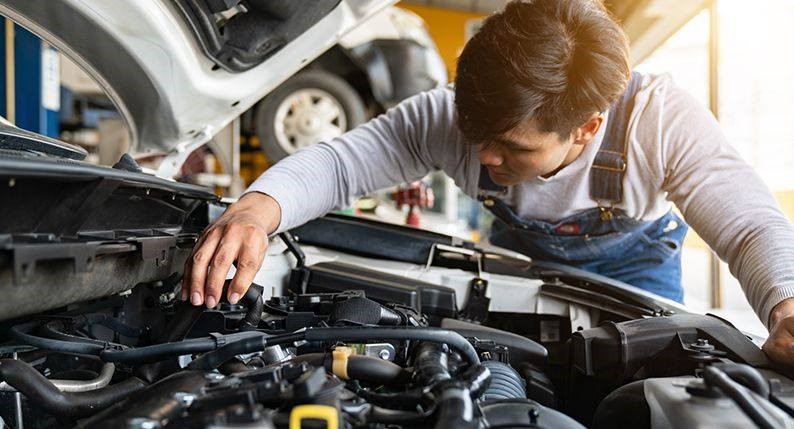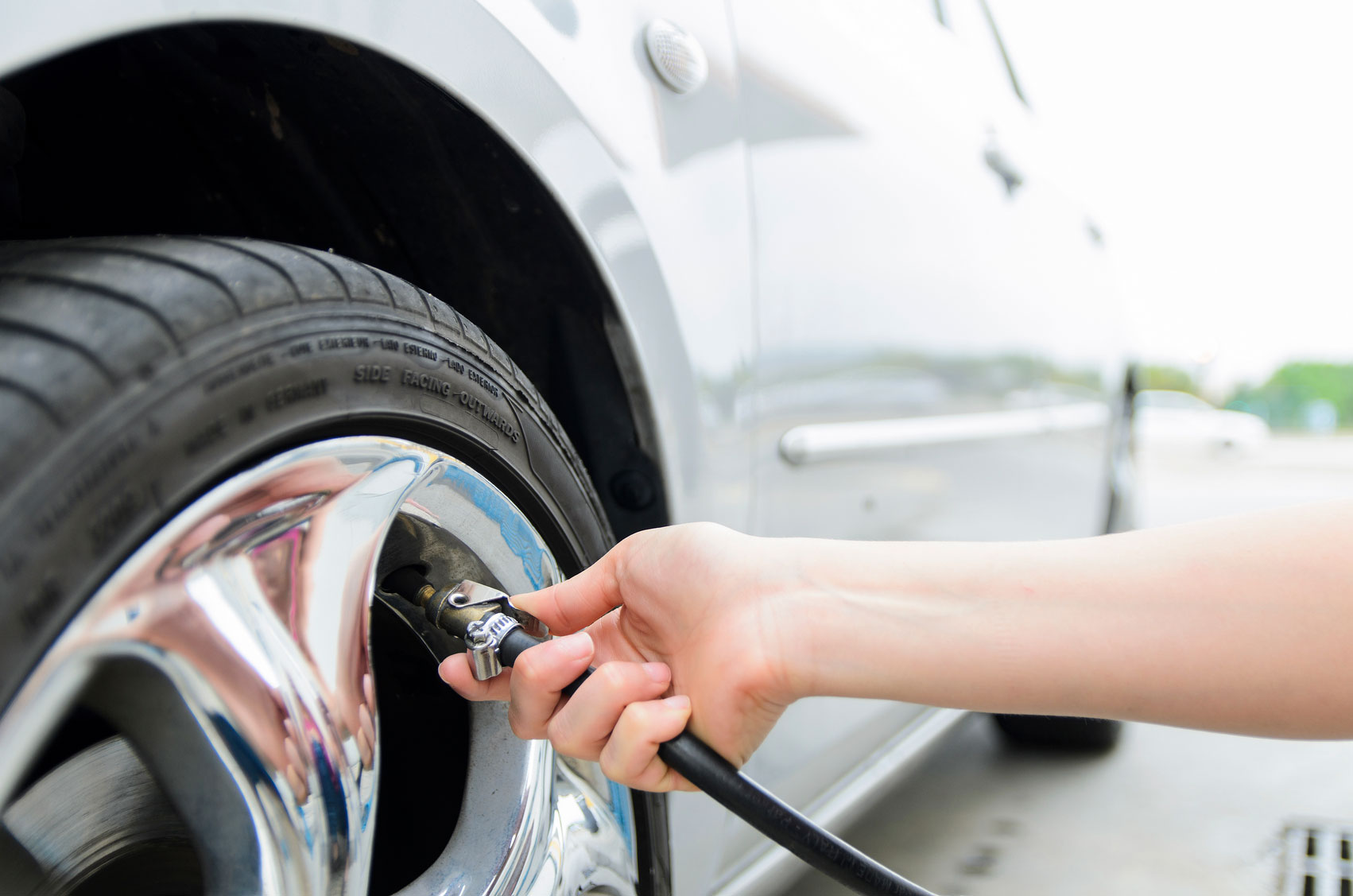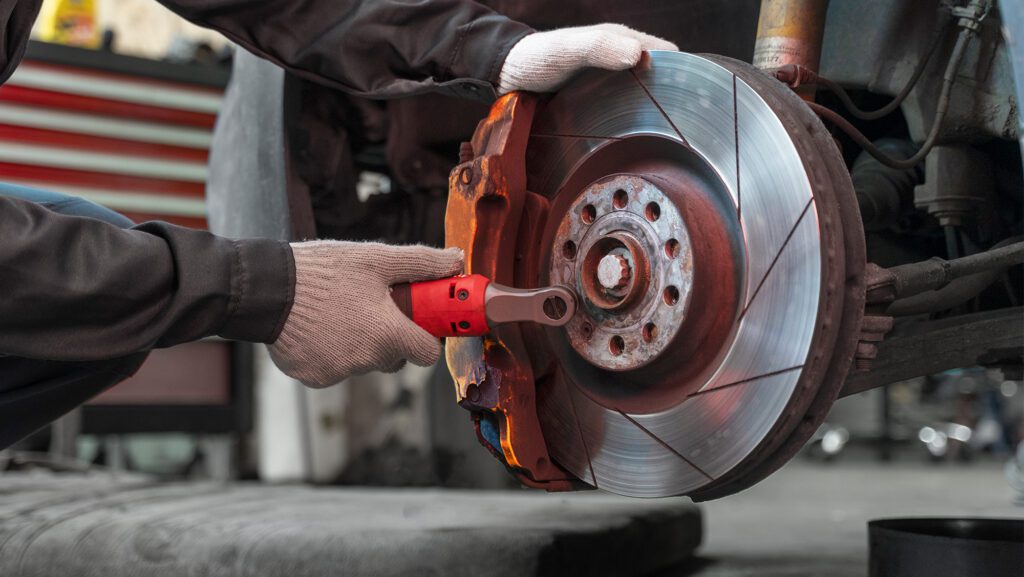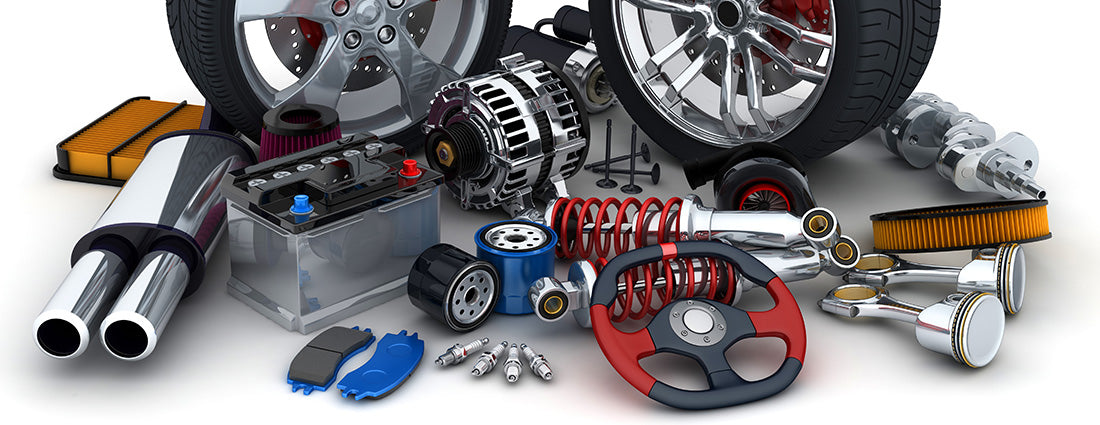
Table of Contents
Automotive Repair- Owning a vehicle is an investment that requires consistent care and attention to maintain its peak performance. Regular maintenance not only ensures a smooth ride but also prolongs the life of your car. If you’re committed to keeping your vehicle in pristine condition, it’s crucial to stay proactive with repairs and inspections. In this article, we will dive into 7 essential automotive repair tips that will help you keep your car running smoothly, avoiding costly repairs and breakdowns.
1. Regular Oil Changes: The Lifeblood of Your Engine

An engine is a finely-tuned machine, its components working in harmony to deliver power and performance. At the heart of this system lies motor oil, a critical element that ensures smooth operation. Regular oil changes are not just a routine task—they are the lifeblood of your engine. Neglecting this essential maintenance can lead to increased friction, overheating, and, in extreme cases, catastrophic engine failure.
Oil serves a vital role in lubricating the numerous moving parts of your engine. As the engine runs, metal parts, such as pistons and valves, move at high speeds, creating friction that generates heat. Without sufficient lubrication, this friction can cause excessive wear and tear, significantly reducing the engine’s lifespan. Oil helps to form a protective barrier between these parts, preventing them from grinding against each other and minimizing damage.
Over time, motor oil degrades and becomes contaminated with dirt, dust, and metal particles from the engine. As the oil breaks down, it loses its ability to effectively lubricate and cool the engine. The consequences of using old, degraded oil are dire—higher temperatures, less efficient engine performance, and a greater risk of components seizing up. This is why regular oil changes are paramount in maintaining the engine’s health.
The frequency of oil changes depends on the type of oil used and the manufacturer’s recommendations. For conventional oil, a change every 3,000 to 5,000 miles is generally advised. However, modern synthetic oils, with their advanced formulations, can last longer—sometimes up to 10,000 miles. Regardless of the type of oil, following the manufacturer’s guidelines is crucial. Regular oil changes not only protect the engine from damage but also ensure optimal performance, keeping your car running efficiently and smoothly.
An oil change is more than just replacing the fluid. It’s an opportunity to inspect the engine and other critical components. During the process, mechanics often check the oil filter, which plays a pivotal role in trapping contaminants and preventing them from circulating through the engine. Replacing the filter during every oil change ensures that only clean, fresh oil enters the engine, further extending its lifespan.
Another important factor is the oil’s viscosity, or thickness. As the oil ages, its viscosity changes, making it less effective at lubricating the engine. Using the right oil with the proper viscosity for your engine ensures that it operates efficiently, particularly during cold starts when the oil is thicker.
Ultimately, regular oil changes are an investment in the longevity and efficiency of your vehicle. They reduce the risk of costly repairs, increase fuel efficiency, and contribute to better overall performance. A well-maintained engine is more reliable, providing smoother acceleration, quieter operation, and improved fuel economy. Consistently changing the oil at the recommended intervals helps to preserve the engine’s integrity, ensuring that your car continues to perform at its best for years to come.
In conclusion, think of regular oil changes not as a chore but as a crucial safeguard for your engine. Maintaining this simple yet powerful habit will keep your vehicle running smoothly and help you avoid expensive repairs down the road.
2. Tire Maintenance: Ensuring Proper Inflation and Tread Wear

Tires are the unsung heroes of any vehicle, bearing the weight of the entire car while providing the necessary traction and control. Proper tire maintenance is crucial to ensuring safety, performance, and longevity. Among the most important aspects of tire care are maintaining correct inflation levels and monitoring tread wear. These two factors play a pivotal role in maximizing tire lifespan and optimizing vehicle handling.
Tire inflation is often overlooked but has a direct impact on the safety and efficiency of your vehicle. Underinflated tires create excess friction with the road, causing tires to wear out prematurely and increasing fuel consumption. Conversely, overinflated tires lead to a harsh, uncomfortable ride and reduced traction, especially in wet or slippery conditions. Proper tire inflation ensures even wear and reduces the risk of blowouts, making it essential to check tire pressure regularly.
Manufacturers typically recommend checking tire pressure at least once a month and before long trips. Tires lose about 1 PSI (pound per square inch) every month naturally, and this rate increases in colder weather. To ensure the right pressure, use a reliable tire gauge and follow the recommended pressure listed on the vehicle’s door jamb or in the owner’s manual. Maintaining optimal tire pressure not only improves safety but also enhances fuel efficiency and contributes to a smoother driving experience.
Equally important to tire maintenance is monitoring tread wear. Tread, the rubber surface in contact with the road, plays a critical role in providing traction, especially during wet or snowy conditions. As tires age, the tread wears down, reducing grip and increasing the likelihood of hydroplaning. Uneven tread wear can also indicate alignment or suspension issues, which, if left unchecked, can lead to further damage.
The simplest way to check tread depth is by using the penny test. Insert a penny into the tread with Abraham Lincoln’s head facing down. If the top of his head is visible, the tread has worn down below 2/32 of an inch, which is the minimum legal limit for tire tread. At this point, it’s time to replace the tires. Alternatively, many tire manufacturers provide tread wear indicators built into the tires themselves, which are raised areas within the tread pattern. When these indicators become level with the surrounding tread, it’s time for new tires.
Regular tire rotation is another essential part of maintaining even tread wear. Since the front tires typically carry more weight and undergo greater stress, they tend to wear out faster. Rotating the tires every 6,000 to 8,000 miles helps to ensure a more even distribution of wear across all four tires. This simple procedure can extend the life of your tires and improve overall vehicle handling.
Tire maintenance goes beyond just ensuring proper inflation and monitoring tread wear. It also involves inspecting the tires for visible damage, such as cuts, punctures, or bulges, which can compromise their integrity. If a tire shows signs of damage, it’s crucial to have it inspected by a professional to determine whether it can be repaired or needs to be replaced.
In conclusion, tire maintenance is essential for ensuring your vehicle’s safety, performance, and longevity. Regularly checking tire pressure, monitoring tread wear, and rotating tires are simple yet effective ways to protect your investment and keep your vehicle running smoothly. Properly maintained tires not only improve fuel efficiency and handling but also enhance your overall driving experience, making it a key aspect of automotive care that should never be neglected.
3. Brake System Care: Preventing Potential Disasters

The brake system is one of the most critical safety features of any vehicle. Its primary function is simple but vital: to slow or stop the car when needed. However, the complexity of modern brake systems means that regular care and attention are required to ensure they perform at their best. Neglecting brake maintenance can result in catastrophic failures that pose significant risks to both the driver and other road users. Proper brake system care is not just about keeping your vehicle in working order; it’s about preventing potential disasters that could be life-threatening.
At the heart of the brake system are the brake pads, rotors, and fluid. Over time, the friction generated by the brake pads against the rotors causes wear, leading to reduced braking efficiency. Worn brake pads should be replaced promptly to avoid damage to the rotors, which are far more expensive to replace. Listening for warning signs like squeaking or grinding noises can alert you to the need for brake pad replacement. These noises often signal that the pads have worn down too thin, allowing the metal to scrape against the rotor.
Equally important is the brake fluid. Brake fluid acts as the hydraulic medium that allows the braking system to function. If the fluid level drops too low, or if the fluid becomes contaminated with air or moisture, the braking response will become sluggish or unresponsive. It’s essential to check the brake fluid regularly, topping it up if necessary. In addition, brake fluid should be replaced at the intervals recommended by the manufacturer—typically every two years or so—because moisture contamination can reduce its effectiveness and lead to brake failure.
Brake lines, the conduits through which brake fluid travels, also require careful attention. Cracked or leaking lines can cause a dangerous loss of brake fluid, leading to complete brake failure. During regular inspections, brake lines should be checked for signs of wear, corrosion, or leaks. A visual inspection of the entire brake system can often reveal potential issues before they become severe. If any damage is detected, repairs should be carried out immediately to prevent disastrous consequences.
Another aspect of brake system care involves ensuring that the brakes are properly aligned and calibrated. Misalignment can lead to uneven brake pad wear, which in turn reduces braking power and compromises safety. When driving, be aware of any signs of poor braking performance, such as pulling to one side when applying the brakes or a spongy brake pedal. These could indicate issues with the brake system, such as misalignment or air trapped in the brake lines.
In addition to the mechanical components, the driving habits themselves can significantly impact the longevity of the brake system. Aggressive braking, such as slamming the brakes during hard stops, places unnecessary strain on the system. Smooth, gradual braking not only preserves the brake components but also ensures more predictable and effective stopping power. In situations where sudden stops are unavoidable, allowing sufficient space between vehicles can reduce the need for abrupt braking, extending the lifespan of the brake system.
Regular brake inspections are crucial in ensuring the system’s reliability. Even if you don’t notice any immediate issues, a professional mechanic should inspect the entire system at least once a year. This proactive approach helps to catch minor problems before they escalate into major ones, reducing the risk of an unexpected breakdown or accident.
In conclusion, brake system care is essential for the safety and longevity of your vehicle. Regularly replacing worn brake pads, checking and replacing brake fluid, inspecting brake lines, and ensuring proper alignment are all vital steps in maintaining the system. Safe driving practices also play a significant role in prolonging brake life. By staying on top of brake maintenance, you can prevent potential disasters and ensure that your vehicle stops when you need it most.
4. Battery Maintenance: Avoiding Unexpected Breakdowns
The car battery is the heart of your vehicle’s electrical system, providing the necessary power to start the engine and run various electrical components. A dead or weak battery can leave you stranded, and there are several ways to prolong its life and prevent unexpected breakdowns.
Start by regularly inspecting the battery terminals for signs of corrosion. If corrosion is present, clean it with a mixture of baking soda and water. Also, ensure that the battery is securely mounted to prevent it from vibrating excessively, which can lead to internal damage. If your vehicle is prone to sitting idle for extended periods, consider investing in a battery tender or trickle charger to maintain charge levels.
Most batteries last between three and five years, but it’s a good idea to have your battery tested annually to ensure it’s holding a proper charge. If your battery is older than three years and shows signs of weakness, it’s best to replace it before it fails completely. By staying on top of battery maintenance, you can avoid the inconvenience and stress of being stranded with a dead battery.
5. Coolant and Radiator Care: Keeping Your Engine from Overheating
Your car’s cooling system is responsible for regulating engine temperature and preventing overheating, which can cause severe engine damage. The coolant or antifreeze in the radiator absorbs heat from the engine, keeping the temperature in check. Over time, the coolant breaks down, and the radiator can become clogged with debris, reducing the system’s efficiency.
It’s important to check the coolant level regularly, particularly during extreme weather conditions, when the engine is under more stress. If the coolant is low, top it off with a mixture of coolant and distilled water, following the manufacturer’s guidelines. Additionally, it’s essential to flush the cooling system and replace the coolant every 30,000 miles or so, as per your vehicle’s maintenance schedule. Neglecting your cooling system can lead to engine overheating, which is a major repair that could cost thousands of dollars. Regular coolant checks and maintenance ensure that your engine stays cool and continues to perform optimally.
6. Air Filter Replacement: Enhancing Engine Efficiency
The engine air filter is an often-overlooked component, but its role in maintaining engine efficiency is crucial. The air filter prevents dirt, dust, and debris from entering the engine’s intake system, allowing for proper combustion and optimal engine performance. Over time, the air filter can become clogged, restricting airflow and reducing fuel efficiency.
To ensure your engine operates at peak efficiency, replace the air filter every 12,000 to 15,000 miles or as recommended by your manufacturer. If you often drive in dusty conditions or areas with high pollution, you may need to replace it more frequently. A clean air filter not only helps your engine run more smoothly but also improves fuel economy and reduces harmful emissions. Regular air filter replacement is a simple, cost-effective way to keep your engine performing at its best.
7. Fluid Checks: Maintaining the Lifeblood of Your Vehicle
In addition to oil, several other fluids are vital to the smooth operation of your car. Transmission fluid, power steering fluid, brake fluid, and windshield washer fluid all play specific roles in maintaining your vehicle’s performance. Regularly checking and topping off these fluids can help prevent mechanical failure and costly repairs.
Transmission fluid ensures smooth gear shifting and prevents damage to the transmission. If your transmission fluid is low or dirty, it can cause rough shifting or even transmission failure. Power steering fluid helps you steer your vehicle with ease, and low fluid levels can lead to hard steering or damage to the steering system. Brake fluid is essential for proper braking function, and low levels can result in brake failure. Regularly check and replace these fluids according to your vehicle’s maintenance schedule to ensure everything runs smoothly.
In addition to these key fluids, don’t forget about your windshield washer fluid. While it may seem like a minor detail, having a full reservoir ensures optimal visibility, especially in inclement weather. Regularly check the fluid levels and top off when necessary to maintain a clear view of the road.
Conclusion
Proper automotive care is essential to maintaining a vehicle that runs smoothly and reliably. By following these 7 essential automotive repair tips, you can significantly extend the lifespan of your car while preventing costly repairs. Regular oil changes, tire maintenance, brake system care, battery maintenance, coolant and radiator care, air filter replacement, and fluid checks are all simple tasks that can have a major impact on your car’s performance.
By staying proactive with maintenance and addressing issues early, you’ll ensure that your car remains in top shape for years to come. Regular attention to these key areas will help you avoid breakdowns, improve fuel efficiency, and keep your vehicle safe on the road. Whether you’re a seasoned car owner or a first-time driver, these tips are a valuable investment in your car’s longevity and your peace of mind.




